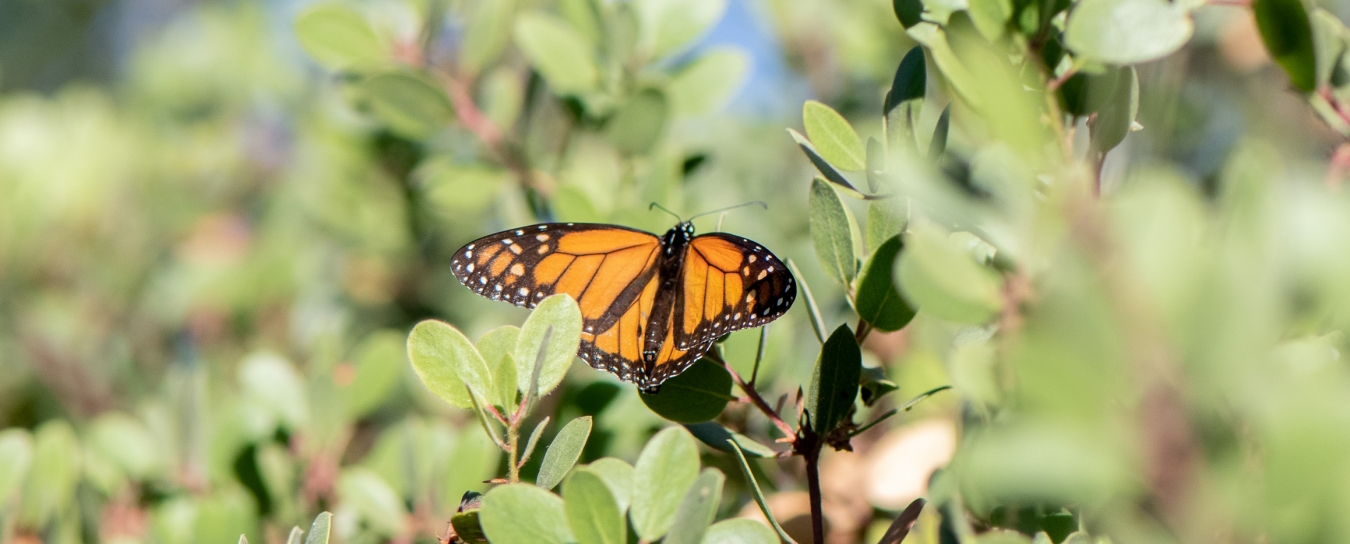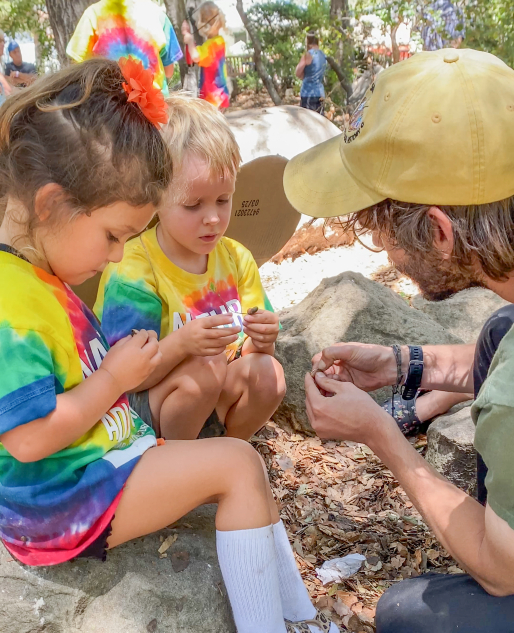
Invertebrates
See our handy guide to critters found in local homes and our Central Coast Butterfly FAQ. Browse the insects and other terrestrial arthropods we’ve identified. Check out local marine invertebrates, particularly bivalve mollusks and intertidal organisms.
- Anthropology
- Rocks & Fossils
- Invertebrates
- Vertebrates
- Botany
- Astronomy
- Fungi
- General
- Recently Asked
What is this organism that I saw all over Butterfly Beach last week?
Can you identify this organism found on Butterfly Beach?

Curator Response
Hi Julie,
This is Aplidium californicum, commonly known as Pacific Sea Pork. It’s a fairly common species to find on the beach, and can easily be mistaken for something else that has washed up on our beaches in great numbers: pyrosomes, the bioluminescent organisms also known as sea pickles.
As you might guess, sea pork has nothing to do with pigs, just as sea pickles have nothing to do with cucumbers. Both are colonial organisms made of many tiny individuals, and both are tunicates. Tunicates are marine filter feeders whose bodies are basically sacks or tubes that draw in and expel water, thereby snagging tiny particles of floating stuff to eat. Sea pork is sessile (as a mature organisms it is lives attached to a surface), whereas sea pickles are pelagic (they live unattached in the water). By far the wackiest fact about tunicates is that of all marine invertebrates, they are the most closely related to humans and other vertebrates. The clue to this is the fact that in their larval state, they have a structure that’s a bit like a backbone. You can read all about this surprising feature of tunicates on this page by the Smithsonian.
Sometimes we have tunicates living in our habitats at the Sea Center, most recently stalked tunicates (they look a lot like a plant but are definitely animals) in our pier piling habitat. The pilings below Stearns Wharf have many tunicates of multiple kinds attached, and it’s not unusual for us to get samples of sea pork on the Wet Deck. Tunicates are also represented in our Marine Science exhibits at the Museum.
Olivia distinguishes the pickles from the pork based on their shape and color. Sea pickles are more consistently an elongated, pickle-like shape than sea pork. Sea pork can also be an elongated shape, but also can often look like round blobs or take on other more amorphous shapes like the specimen in your photo. Sea pickles also tend to be more transparent, sometimes clear or slightly tinted orange, and sea pork tends to be more consistently an opaque orange/pinkish color.
Stay curious,
Invertebrate Zoology Curatorial Assistant Van Henderson, Curator of Malacology Daniel L. Geiger, Ph.D., and Sea Center Science Communication Coordinator Olivia Bañez


